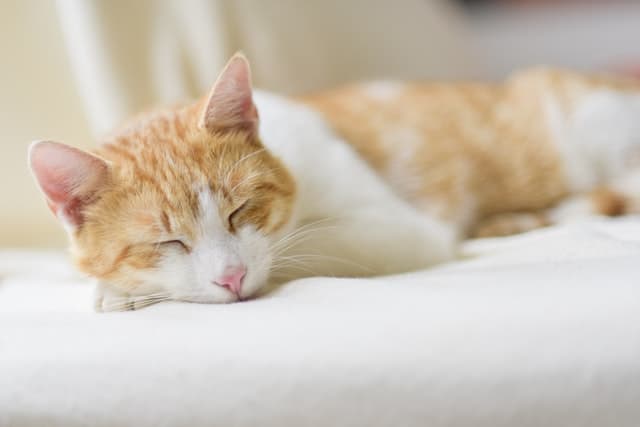
Early diagnosis is essential for cat health: this is why you need to learn to recognize the signs of diabetes in cats in order to be able to deal with the disease immediately.
Diabetes mellitus is a chronic and potentially debilitating condition for cats, but it can be adequately treated to make a cat live a peaceful and relatively normal life if diagnosed in good time.
In most cases, diabetic cats are obese. The disease most frequently affects males over eight years of age and those who follow a diet that is too high in carbohydrates.
Diabetic cats are constantly increasing and that is why it is good to know how to recognize the signs of diabetes in the cat in time, so as to be able to take the cat to the vet to carry out the tests necessary to have a certain diagnosis and all the right rules. for the constant treatment of the disease.
10 signs of diabetes in cats that should not be underestimated

Diabetes mellitus is a pathological condition that occurs when cells develop resistance to insulin, the hormone that allows glucose to enter cells. This way, the glucose stays in the bloodstream causing a variety of disturbances that can be easily seen when your cat gets sick.
Let’s see what are the 10 most common signs of feline diabetes, starting from the very first symptoms that this disease can present.
1. The cat pees much more often
The so-called polyuria consists in an increase in urination: the presence of a greater amount of sugar in the blood makes the work of the kidneys more complex, so the cat tends to pee more often. We usually notice this because the cat can’t restrain itself and urinates out of its litter box.
2. Excessive thirst in the cat
More frequent urination causes a tendency to dehydration which the cat tries to make up for by drinking much more water than usual: a sort of vicious circle is created between these first two signs of diabetes in the cat, which often represent the first signs that the cat may have the pathology developed.
3. The cat loses weight even if it eats normally
When the cat is diabetic, the cells can no longer absorb glucose from the blood. This implies that the body feels it does not have enough energy and therefore begins to find it by breaking down the fats and proteins available in the body: this causes weight loss and consequent weight loss in the cat.
4. The cat is always hungry
The same mechanism is at the basis of the growing and constant hunger for cats: the brain sends a continuous appetite signal that asks to be satisfied, so it is possible that the cat tends to ask for food even outside the usual times of its meals. .
5. The cat has difficulty jumping
Lack of glucose causes muscle weakness affecting the cat’s paws, especially the rear paws, which is why your cat can have serious difficulty jumping due to diabetes. In general, if the cat is no longer able to jump on furniture as it did in the past, it is plausible that there is an ongoing health problem.
6. Passivity and fatigue in the cat
Sometimes it is difficult to recognize the passivity and the loss of interest of the cat, because often these animals are used to sleeping many hours a day. Learn to carefully observe your cat’s behavior, knowing that inactivity is one of the possible signs of diabetes in cats.
7. Difficulty walking
Diabetes, therefore, can lead to muscle weakness in the cat which is also found in a certain difficulty in walking: in particular, the cat can present a typical gait in which it tends to walk carrying the weight on the back of the body. The high amount of glucose in the blood causes neuropathy, which can also lead to permanent paralysis.
8. Loss of appetite in cats
Among the late symptoms of diabetes mellitus in cats is the lack of appetite, a signal that in general is never positive in domestic cats: cats stop eating when something is wrong and therefore lack of appetite does not it should never be underestimated.
9. The cat is vomiting for no apparent cause
Just like when trying to look for signs of diabetes in dogs, vomiting with no apparent cause should be watched for in cats. In fact, it could be an episode of diabetic ketoacidosis: a real veterinary emergency, which may require the animal to be hospitalized.
10. Lethargy in the cat
Diabetes often leads the cat to feel tired, little interested in games and food, poorly brought to physical contact: when the sugar is trapped in the bloodstream, in fact, the cat is unable to obtain the dose of energy it needs to carry out the normal daily activities.






